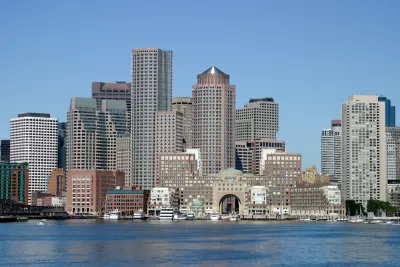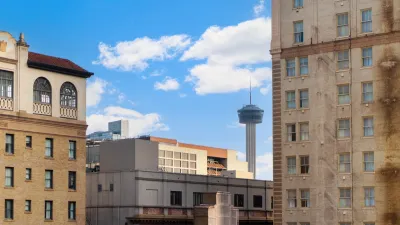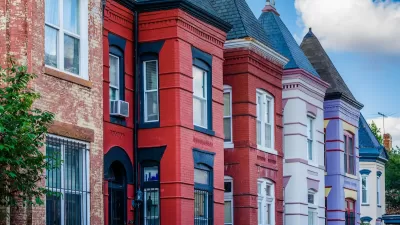When workers can't afford to live near jobs, the results are more than just housing cost burdens.

Dwyer Gunn takes a closer look at several recent and forthcoming research papers on increasing housing costs and the economic and job market effects. A new Urban Institute feature shows the outcome of spatial mismatch, where there are discrepancies between the location of workers and the location of employment opportunities, writes Gunn:
When rising rents drive workers to live too far from available jobs to apply for them, businesses and the economy suffer as well. It's not hard, after all, to imagine a coffee shop or restaurant that forgoes business, and economic growth, because it isn't able to hire the workers it needs to provide adequate customer service.
In urban areas where housing demand exceeds supply, developers would be expected to respond by producing more housing. However, this has not been the case, notes Gunn. "And while some regions do face geographic barriers (e.g. oceans) that can limit spaces to build new housing, most economists point to a policy choice—restrictive zoning and land-use regulations that effectively limit new building—as a significant driver of the housing-affordability crisis."
In addition to local and regional effects, research shows that these restrictions led to a 36 percent decrease in aggregate national growth between 1964 and 2009. And other research indicates that regulations have also resulted in fewer people relocating to high-productivity parts of the country, such as New York and California, which means economic growth is not resulting in the redistribution of people as it has in the past.
These findings suggest a strong need for zoning reform, transportation improvements that can decrease commute times, and better quality low-wage jobs, concludes Gunn.
FULL STORY: HIGH RENTS ARE STUNTING JOB-MARKET GROWTH

Maui's Vacation Rental Debate Turns Ugly
Verbal attacks, misinformation campaigns and fistfights plague a high-stakes debate to convert thousands of vacation rentals into long-term housing.

Planetizen Federal Action Tracker
A weekly monitor of how Trump’s orders and actions are impacting planners and planning in America.

In Urban Planning, AI Prompting Could be the New Design Thinking
Creativity has long been key to great urban design. What if we see AI as our new creative partner?

Massachusetts Budget Helps Close MBTA Budget Gap
The budget signed by Gov. Maura Healey includes $470 million in MBTA funding for the next fiscal year.

Milwaukee Launches Vision Zero Plan
Seven years after the city signed its Complete Streets Policy, the city is doubling down on its efforts to eliminate traffic deaths.

Portland Raises Parking Fees to Pay for Street Maintenance
The city is struggling to bridge a massive budget gap at the Bureau of Transportation, which largely depleted its reserves during the Civd-19 pandemic.
Urban Design for Planners 1: Software Tools
This six-course series explores essential urban design concepts using open source software and equips planners with the tools they need to participate fully in the urban design process.
Planning for Universal Design
Learn the tools for implementing Universal Design in planning regulations.
Gallatin County Department of Planning & Community Development
Heyer Gruel & Associates PA
JM Goldson LLC
City of Camden Redevelopment Agency
City of Astoria
Transportation Research & Education Center (TREC) at Portland State University
Jefferson Parish Government
Camden Redevelopment Agency
City of Claremont





























